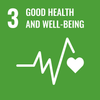We've talked about the power we have as consumers, and how small actions can make a huge difference. (Sustainability: the "you-and-me" way)
We will talk about this more (so much more!)
But in this blog post, I wanted to zoom out. To a global view of the Fashion Industry.
And I thought I'd frame the discussion using the United Nations Sustainable Development Goals, and how they relate to Fashion Industry.
(Spoiler: they are more related than you might think!)
The United Nations Sustainable Development Goals
First a few definitions.
United Nations
They’re a global organization where the world's nations join together to find common solutions to common problems. Find out more about their important work here.
Sustainable Development
Sustainable Development means growing (changing, becoming more advanced) to meet our needs of today, without putting the needs of future generations at risk.
So, growing economically while keeping the needs of ALL people, and the planet in mind.
17 goals
In 2015, the UN developed a 15-year plan, with goals covering 17 challenges that we face, so that we can all have a better future.

[Image: UN Sustainable Development Goals]
How does this relate to fashion?
DEFINITELY Goal 12 – Responsible Consumption and Production. That’s where the direct influence can happen. And we’ll talk about that in a minute.
But, if you REALLY think about it, there are so many other Goals that could be positively impacted if the Fashion Industry “we” takes action.
Let’s look at a few goals that relate to people:




[Images: UN Sustainable Development Goals]
1 – No Poverty
3 – Good Health and Well-being
5 – Gender Inequality
8 - Decent Work and Economic Growth
Imagine what the world would look like if…
- all Fashion Industry workers were paid a fair and equal wage, and none were living below the poverty line?
- all Fashion Industry facilities protected the health and safety of their workers?
- Child labour, forced labour and sexual harassment in the workplace were eliminated?
- white men holding the majority of management positions in the Fashion Industry was a thing of the past?
These are massive human rights problems. What can we do as consumers?
Now, let’s talk about the big environmental goal that relates to fashion.
Goal #12 - responsible consumption and production

[Image: UN Sustainable Development Goals]
Responsible Consumption
That’s where the consumer – the “you & me we” - makes our biggest impact.
Impact in:
- the clothes and accessories that we buy
- how we use what we buy
- how we get rid of what we buy
We talked about that briefly here, and will dive into it further in an upcoming post.
Responsible Production and the Fashion Industry
This is where we the Fashion Industry can reduce its environmental impact.
Imagine the impact on the planet if the Fashion Industry significantly reduced its:
- water consumption?
- energy consumption?
- water pollution?
What if the Fashion Industry moved towards a model where manufacturing was driven by demand, eliminating massive overproduction problems?
What if the Fashion Industry reduced its production waste output?
I won’t start spewing numbers right now (even though you KNOW that I want to!).
Suffice it to say, the impact would be huge.
And any work that the Fashion Industry does to work towards Goal 12 - Responsible Production, can also impact these other goals:



[Images: UN Sustainable Development Goals]
6 – Clean Water and Sanitation
13 – Climate Action
14 – Life Below Water
Almost half.
Half of the United Nations Sustainable Development goals.
8 out of 17 goals. That's massive.
These ideas are straightforward, right? Seems like an easy fix. Just DO it.
Two cogs in the wheel:
Cost and complexity.
Fashion is BIG Business. BIG Businesses have BIG costs
How much?
For the Fashion Industry to move to a more sustainable model, the cost would be immense. BIG Brands won't want to take a hit to their profits, so this cost would likely be passed on to the consumer.
But raising their prices is a big risk.
We're used to Fast Fashion and its low low prices.
It's complicated.
Because of the way BIG fashion (and in particular FAST fashion) is structured, supply chains are extremely complex. Brands are so far from the factory floor, with layers and layers of contracting companies and subcontractors…
it’s easy to ignore.
It’s also a monster of a big ship to turn around - even for big brands with good intentions.
What we need is more local and shorter supply chains so that we can keep an eye on what's going on.
Transparency is the key to launching the revolution.
This is why:
- These UN Sustainable Development Goals are so important.
- Groups like Fashion Revolution are important.
- Continuing the conversation is important.
Let’s talk about it! Is there any part of this conversation you’d like to dive into deeper in our next sustainability blog post? Let us know in the comments!

Leave a comment